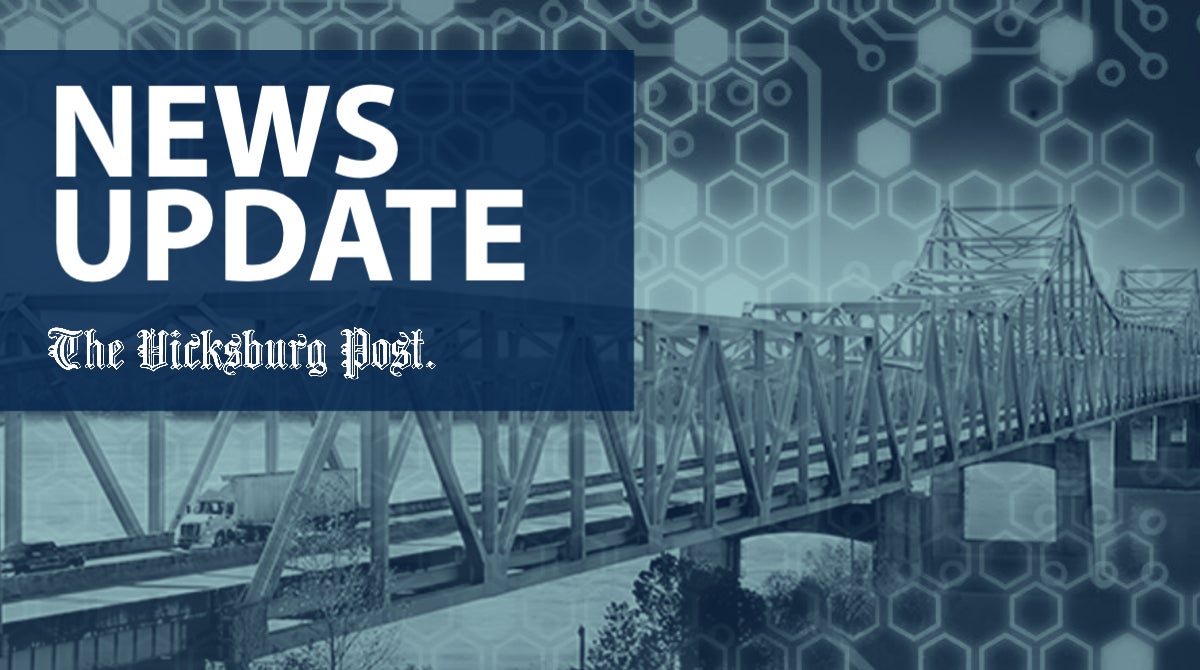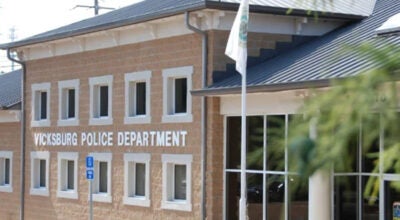Bridge, river reopen as cleanup continues
Published 10:40 am Thursday, February 13, 2014
By Matt Stuart
matt.stuart@vicksburgpost.com
and Josh Edwards
josh.edwards@vicksburgpost.com
The Interstate 20 bridge across the Mississippi River and the river itself reopened late Wednesday about 15 hours after a multi-vehicle wreck caused a chemical spill that shut down traffic on both thoroughfares.
Eastbound lanes on the bridge were opened about 5 p.m., 13 hours after the initial wreck that caused a toxic chemical to leak onto the bridge and into the river. Westbound lanes were opened about 7 p.m.
Warren County Emergency Manager John Elfer said the combination of hazardous materials and multiple wrecked 18-wheelers made the bridge cleanup a complicated situation.
“I think the biggest initial hold up was the haz-mat issue and the containment response,” he said. “Once the crews got it where they could work safely with it, then they had to remove all those 18-wheelers that had severe damage. It was a complicated incident and then the weather didn’t help.”
Elfer said he is impressed with how quickly the situation was resolved.
“The multi-agency response and professionalism I saw displayed … is one of the reasons it was successful and wasn’t a 24-hour issue,” he said.
Throughout the day, traffic was diverted to U.S. 61 South to cross the river in Natchez or to U.S. 61 North to cross at Greenville. Many truck drivers chose to park their rigs in nearby parking lots and along U.S. 61 South.
Marshall Hill, district engineer with the Louisiana Department of Transportation, attributed the delayed opening of the westbound lane to damage caused by the wreck.
“We had to repair some railing in that lane,” he said.
Barge traffic on the river opened at about 11:30 a.m. after the Louisiana Department of Environmental Quality deemed the river safe to open, said U.S. Coast Guard spokesman Lt. Brian Porter.
“I don’t have a number for how many were in the queue, but it didn’t become an issue,” Porter said.
Porter said the role of the Coast Guard now shifts to an investigative capacity.
“As far as the Coast Guard goes, we don’t have a role in the cleanup,” he said. “We have an investigative role in pollution, but the Louisiana DEQ will proceed with the cleanup.”
The chemical that leaked out of one of six 18-wheelers involved in the wreck was acetonitrile sodium hydroxide, said Albert Paxton, spokesman for the Louisiana State Police.
Authorities didn’t specify how much of the chemical leaked onto the road and in the river. A call to LDEQ was not returned.
The spill began after the rigs wrecked shortly after 4 a.m. Wednesday, Paxton said.
The tractor-trailer rig carrying the hazardous chemical was struck from behind, he said.
“This severed the liquid line on the tanker. This hazardous liquid material is leaking into the river,” he said at the time.
Paxton said, according to the driver of the first 18-wheeler involved, the wreck began when the rig wrecked after trying to avoid a small car that had lost control.
The vehicle carrying the hazardous chemical and another truck were able to come to a stop but were hit by the subsequent 18-wheelers.
Acetonitrile sodium hydroxide — a flammable, corrosive liquid — is a solvent used in manufacturing pesticides, pharmaceuticals, rubber and batteries.
Acetonitrile is toxic if inhaled or if it comes into contact with skin, and it becomes cyanide when metabolized by the human body, according to the Centers for Disease Control.
Initially, the chemical was reported to be isopropyl 2-chloropropionate.
The United Nations requires trucks hauling hazardous chemicals to display a numbered and color coded placard indicating the danger of the chemical. Acetonitrile sodium hydroxide falls into a category of unspecified chemicals for which trucks must have a red placard bearing number 2924. Isopropyl 2-chloropropionate has the same red placard with number 2934 printed on it.
Both substances are corrosive and flammable and emergency response protocol is similar for the chemicals, according to the United Nations Committee of Experts on the Transport of Dangerous Goods.
Representatives with Suttles Trucking, of Demopolis, Ala., declined to make a statement. Suttles Trucking is owned by The Dana Companies, a New Jersey-based shipping company.
East-west train traffic through Vicksburg had been slow before Wednesday’s accident, U.S. 80 bridge superintendent Herman Smith. Issues with a swinging bridge in Monroe across the Ouachita River had been cited by Kansas City Southern Railroad for the slowdown, Smith said, adding one westbound train crossed the river Wednesday.
In January 2013, the Mississippi River was shut down for six days when a tow carrying two barges of oil struck the U.S. 80 bridge. The barges, which were at risk of being sunk, were pushed onto the Louisiana bank by towboats until all the oil was siphoned from them.
About 7,000 gallons of crude oil spilled into the river.
Previously, an oil spill in February 2012 closed part of the river for less than a day after an oil barge and a construction barge collided, spilling about 10,000 gallons of oil.
In 2008, a fuel barge collided with a tanker and broke in half, dumping 283,000 gallons of heavy crude into the waterway and closing the river for six days.









